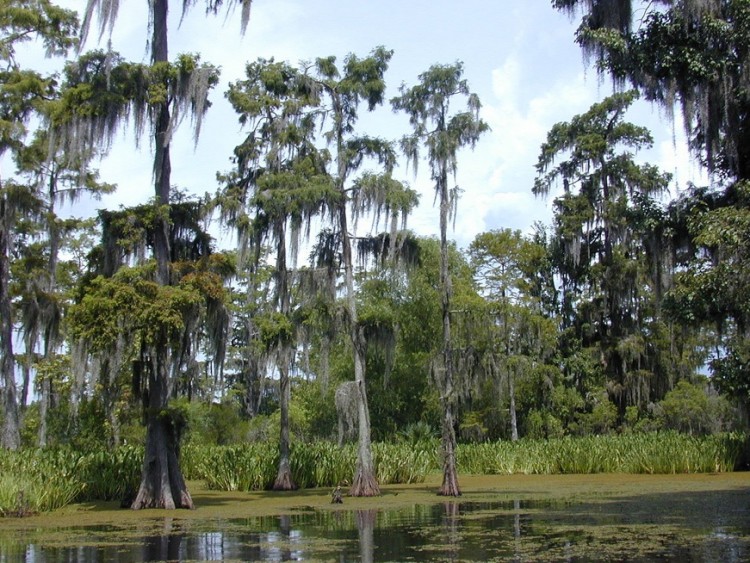Envisioning elegant scenes from nature, Augen Greenwood slips into his boat to take an early morning tour of the Atchafalaya Basin in coastal Louisiana. Arriving in time to catch the sunrise, Greenwood’s expectations turn to dismay. He is confronted with dead tree trunks and rusting oilrigs.
There was no “enchanted forest with light beams cutting through the mist,” the photographer and owner of Augen Photographic Studio said. “I wondered if I had taken the wrong turn.”
Cypress swamps are valued for their role in protecting property and lives during hurricanes, and the Atchafalaya serves as a buffer for southeastern Louisiana. But, due to over logging of cypress trees by mulch companies, the forest is dwindling.
“As a photographer it was an exceptionally moving experience to know that something so beautiful that took so long to create, was decimated in a virtual blink of an eye by uncaring individuals,” Greenwood said.
The Atchafalaya Basin
The Atchafalaya Basin is 135 miles long and runs along 1.4 million acres of forest. It is a branch of the Mississippi River that flows into the Gulf of Mexico. Endangered bird species live in the basin, along with nine endangered wildlife species such as the Louisiana black bear and the bald eagle, according to the Atchafalaya Basinkeeper, a nonprofit organization dedicated to restoring ecosystems within the region.
“The Atchafalaya is considered the most productive swamp in the world ... three to five times more productive than the Everglades and the Okefenokee Swamp,” stated the website.
Eliciting the help of airplanes from SouthWings, a nonprofit organization, the Basinkeeper crew flies over the swamp looking for illicit goings-on.
“We have identified illegal logging on state lands in the Atchafalaya Basin and illegal discharges by oil companies,” the website said.
“I had meetings with anonymous people on more than one occasion, asking me how I found out about the violations,” said Dean Wilson, executive director of Basinkeeper.
He said they made threats to “take care of the person” who had reported the issue to authorities, but did not wish to speak further.
Wilson said he believed the people were hired by mulch industries.
Mulch industry
Robert LaGasse, executive director of Mulch and Soil Council, said the mulch harvesting is being carried out in accordance with the sustainable regeneration of the forest.
“We encourage the best management practices. ... Most harvesting is now done by sustainably certified loggers,” said LaGasse, adding that there a few companies that aren’t certified.
“It is not economically feasible to use cypress from coastal Louisiana due to the salt water levees and roads that bring filth into the Mississippi River, which expands the water back into the swamp.”
According to LaGasse, a study was conducted in 2008 that showed that only cypress from Coastal Louisiana was incapable of regenerating due to salt-water intrusion from the Gulf of Mexico. Another review was recently collected by the U.S. Forest Service saying the same thing.
Regeneration
The cypress in the Atchafalaya Basin has failed to regenerate from logging as far back as the 1900s. Many of the remaining cypress trees are dying and not suitable for logging.
The Science Working Group conducted a study that concluded, “80 percent of the areas being logged will be unable to regenerate” due to elevation of water flow, many cypress tree forests are “permanently flooded.”
“In absence of logging cypress is still in grave danger ... due to persistent inundation that precludes natural regeneration,” said John Ettinger, an Environmental Protection Agency official based in New Orleans. The state of Louisiana and the federal government are working on restoration plans and projects for the wetland.
Basinkeeper worked with Tulane Environmental Law Clinic, U.S. Army Corps of Engineers, and the Environmental Protection Agency to establish a law banning cypress logging in coastal Louisiana. The law was passed in February 2009.
Wilson said he is currently working with groups to fight cypress logging all across the country. “Cypress logging is a problem everywhere, not just in Louisiana.”





